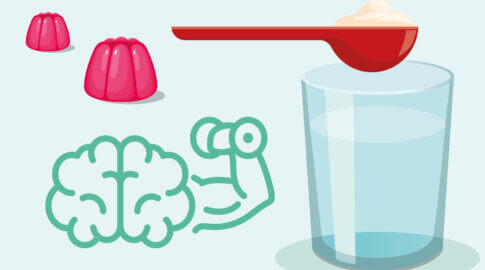Hayfever, breathlessness during exercise, and enjoying summer with a Hickman line
This time, we hear advice on medication for hayfever, breathlessness when exercising, enjoying summer with a Hickman line, and how often you should expect to be seen by your team.
‘Ask the experts’ runs every quarter in Emphasis, the PHA UK’s member magazine. If you’ve got a question you’d like answering, please email media@phauk.org
I’m trying to lose weight and I know I should be doing more exercise, but I worry that it will make my breathlessness worse. How do I know how far to push myself?
Carol Keen, Clinical Specialist Physiotherapist in Pulmonary Hypertension, says:

It is important to get a little bit out of breath when you are exercising – that’s how you get fitter
Exercise is really important in pulmonary hypertension – we know this through research and through the feedback we get from our patients too. Being fitter and stronger will make living with your PH easier. And exercise can help in other ways too, like improving your mental health.
The best form of exercise to do is the one that you enjoy. So, if you like to walk then walk, if cycling is your thing then look into options for cycling. If you prefer to be indoors then it’ll be easiest to find something for you to do at home or at a gym – an exercise programme, a class or maybe something like yoga. You won’t be able to exercise in the same way as you could before your PH, but there are many different ways to adapt activities to suit you. Start very small, then gradually build up your activities.
In terms of how a far to push yourself, it is important to get a little bit out of breath when you are exercising – that’s how you get fitter. So, if you are a little bit out of breath, but you can still chat, then that’s just the right level of exercise. If you are breathing heavier than that, or gasping or panting, then you are working too hard and need to slow down or stop. You should also stop if you feel dizzy or experience chest pain.
If you have concerns, then check with you PH centre before you start exercising – some centres have a physiotherapist who would be very happy to help.”
I have started to get hayfever in the summer, which can get quite bad when the pollen count is high. Can I take antihistamines with PH medication?
Nadine Turner, Advanced Clinical Pharmacist at the Scottish Pulmonary Vascular Disease Unit, says:

There is a class of drugs that can sometimes be used for hayfever called decongestants which should be avoided if you have PH.
Hayfever is a troublesome problem that many people suffer from, particularly in the spring and summer months, when pollen count is high. It is caused by an allergic reaction to the pollen made by plants and can have a number of different symptoms such as itchy or runny eyes, sneezing or coughing, blocked or runny nose, headache, earache or feeling tired.
There are a wide range of hayfever treatments available to buy over the counter – the main being antihistamines, primarily tablets such as chlorphenamine, loratidine or cetirizine. These antihistamine tablets do not interact with disease targeted treatments for PH however it is always important to double check with your pharmacist as other medications you are on could interact.
Other treatments for hayfever offer a more localised effect for specific symptoms such as eye drops (sodium cromoglicate) which are useful for runny eyes, and steroid nasal sprays (beclomethasone, mometasone) which are useful for a blocked/runny nose. These are also safe with PH treatments.
There is a class of drugs that can sometimes be used for hayfever called decongestants which should be avoided if you have PH. This is because they are vasoconstrictors and so if absorbed into the bloodstream they could work against your PH treatment.
If you are unsure what is in the treatment you are buying, it’s always best to double check with your pharmacist.
I have PAH and have an annual appointment with my specialist centre for a check-up. However, someone else I know with the condition sees her specialist four times a year – why is it so different?
Dr John Wort, Clinical Lead for PH at the Royal Brompton Hospital, says:

The number of times we send check-ups generally depends on how stable you are and where you are in your journey with PH
The first thing to say is that although there may be small differences in the way the centres work, on the whole we follow similar principles. The number of times we send check-ups generally depends on how stable you are and where you are in your journey with PH. For patients who are new to the diagnosis or to the service, we will need to see you more often, to make sure we have you on the right treatments and that any side effects of medications are controlled. This will generally be four times a year. We may also need to see your more often if you are struggling to cope psychologically with your diagnosis. If your condition gets worse for any reason, we will also need to see you more often until things stabilise out again.
However, when you are stable, we will need to see you less often and maybe only once a year. It is very rare to be seen less than once a year. Remember, if you are worried about your condition and don’t have an appointment for a while, please let your service know and an earlier appointment will be made. We are always there for you!
I’m hoping to get away on holiday this summer, even if it’s just in the UK. Can I enjoy the sea or pool with a Hickman line? Ideally, I’d love to be able to swim.
Wendy Gin-Sing, Clinical Nurse Specialist in PH at the Hammersmith Hospital, says:

If you are around water, you should ensure that your infusion pump is kept in a waterproof pouch with an outlet for tubing
A break is just what we all need and there are some beautiful places to stay in the UK. We always advise that you don’t go swimming when you have Hickman line, due to the risk of infection as the sea is full of bugs and pools are not much better either. There is also the worry of your infusion pump malfunctioning from contact with water, as interruptions in prostanoid therapies can be life-threatening.
Having said that, there are people who, knowing the risks, decide that they really do want to get into the water – and steps can be taken to make this safer. Bespoke dry suits from companies such as www.hammond-drysuits.co.uk have tight seals around the arms, legs and neck to keep your chest dry when swimming.
If you are around water, you should ensure that your infusion pump is kept in a waterproof pouch with an outlet for tubing, like those available on www.aquapac.net. The insertion site of the Hickman line should be well covered with a waterproof dressing such as Tagaderm or IV 3000 and the extension tubing well secured.
Make sure you test out your dry suit and pouch in the bathroom at home before you go away so you are familiar with them and you know that they work. Even with all these measures in place, make sure you have your spare pump and supplies close by just in case and take the contact numbers for your PH team with you. I hope you have a great holiday.















